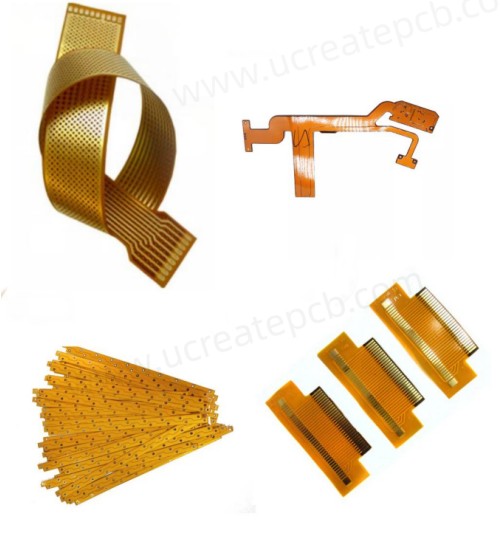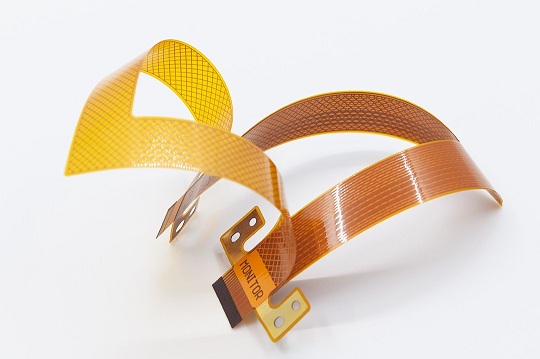Categories
Recent Posts

6. High-Density Integration: Multi-layer flexible circuits can accommodate a high density of components and traces, enabling complex electronic systems in a small space.

Flexible circuit boards find applications in various industries, including consumer electronics (foldable smartphones, wearable devices), automotive (advanced displays, sensors), healthcare (medical devices, wearable health monitors), aerospace (avionics, satellites), and more. Their ability to adapt to the needs of modern technology and design trends makes them a crucial component in pushing the boundaries of innovation.
At its core, a flexible circuit board is a slim, lightweight substrate that can bend, twist, and conform to intricate shapes without compromising its functionality. This adaptability, previously unheard of in conventional electronics, stems from its composition – a combination of specialized materials, including polyimide, that ensure durability and reliability even under extreme conditions. This allows for the creation of products that were once deemed implausible.
Unleashing Imagination: Applications Beyond Boundaries
The world of flexible circuit boards is a realm of boundless opportunities, where innovation takes center stage. From aerospace to medical devices, consumer electronics to automotive technology, these marvels are seamlessly integrating into every facet of our lives.
1. Healthcare and Wearable Technology:
The healthcare industry is experiencing a paradigm shift with the incorporation of flexible circuit boards.
These boards, capable of comfortably adhering to the contours of the human body,have enabled the development of wearable health monitors that provide real-time data on vital signs,
promoting proactive health management. From smartwatches that monitor heart rates to adhesive patches that track glucose levels, the applications are limitless.
2. Aerospace and Defense:
The stringent demands of aerospace and defense technology call for innovation that transcends limits.
Flexible circuit boards have risen to this challenge by offering lightweight solutions that can withstand extreme vibrations,temperature fluctuations, and space constraints.
These boards have redefined avionics, from enhancing communication systems to optimizing satellite performance, ushering in a new era of space exploration.
3. Consumer Electronics:
In an era where consumer electronics have become an extension of our identity, flexible circuit boards have transformed how we interact with technology.
Bendable smartphones, rollable displays, and even foldable laptops are now a reality, thanks to these remarkable circuit boards.
They not only enhance the user experience but also provide designers with unparalleled creative freedom.
4. Automotive Innovation:
The automotive industry is evolving rapidly, with electric and autonomous vehicles shaping the future of transportation.
Flexible circuit boards are playing a pivotal role in this transformation, powering advanced driver assistance systems, infotainment displays, and communication networks.
Their ability to conform to the contours of a vehicle's interior opens doors to innovative interior designs and improved vehicle connectivity.
The Power of Collaboration: Shaping Tomorrow, Today
The journey of flexible circuit boards from an avant-garde concept to a game-changing reality has been fueled by collaboration across disciplines.
Engineers, materials scientists, designers, and manufacturers have come together to harness the full potential of these boards.
This collaborative spirit has not only driven advancements in technology but has also contributed to reducing production costs, making flexible circuit boards more accessible to a broader range of industries.
A Glimpse into the Future: Flex Circuit Boards 2.0
As we stand at the cusp of a new technological frontier, it is evident that the evolution of flexible circuit boards is far from over.
Researchers are tirelessly working to develop next-generation materials that will further enhance their capabilities.
From improved flexibility and durability to increased energy efficiency and enhanced integration of components, the future promises even more astonishing possibilities.
Imagine a world where clothing is not just fabric, but a network of sensors seamlessly integrated into the fabric of daily life.
Envision vehicles that are not only efficient but also customizable, with interior designs that adapt to your preferences.
Picture medical devices that not only monitor health but also proactively administer treatments based on real-time data. This is the world that flexible circuit boards are shaping, one innovation at a time.
Embrace the Future: Join the Flex Revolution
In the grand tapestry of technological advancement, flexible circuit boards are the threads that weave together innovation, adaptability, and limitless potential.
As we gaze into the future, it is clear that their impact will continue to transcend boundaries and reshape industries.
Related Posts:
1. What is the difference between FPC flexible boards and PCB rigid boards?
2. How FPC Flexible Circuit Boards Are Processed?
3. The Significance of Flexible PCB Prototyping
4. Top 10 PCB Circuit Board Manufacturers in China
Send Your Inquiry to Sales@ucreatepcb.com, we will quote you in 2 hours!